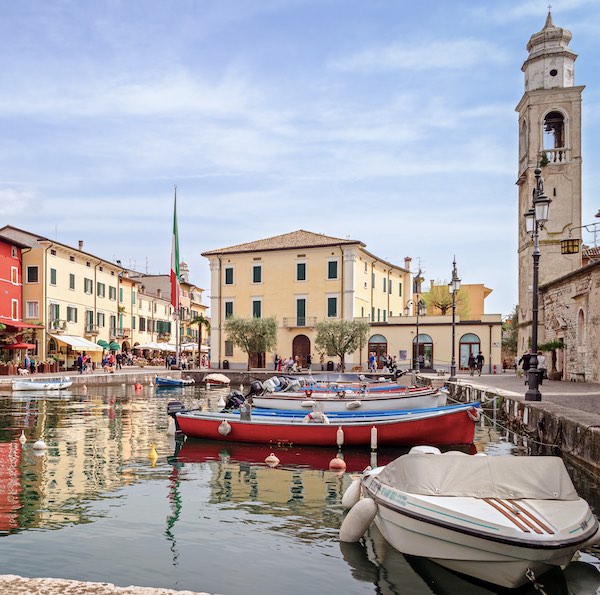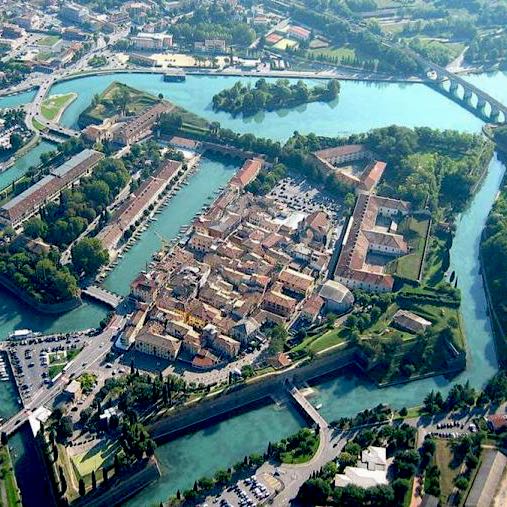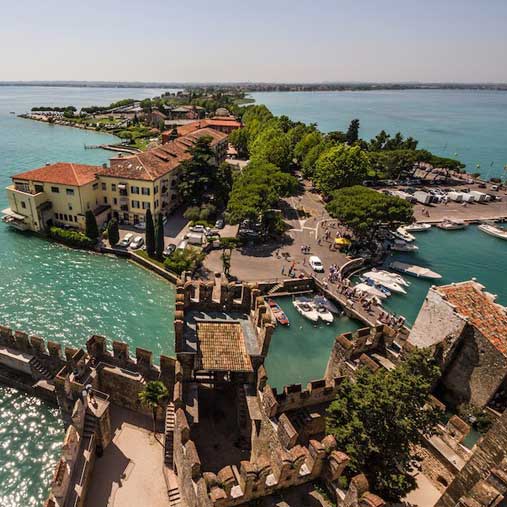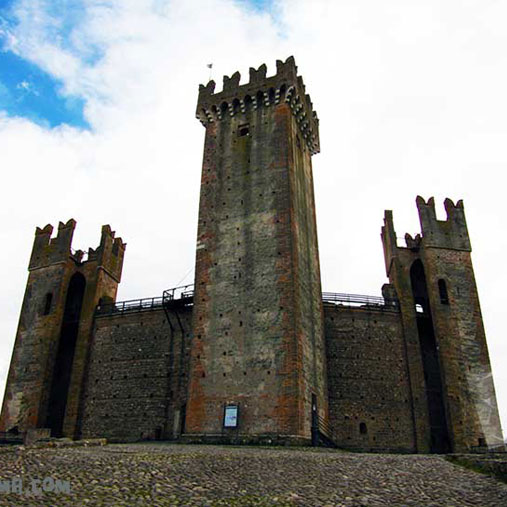Custoza White Wine
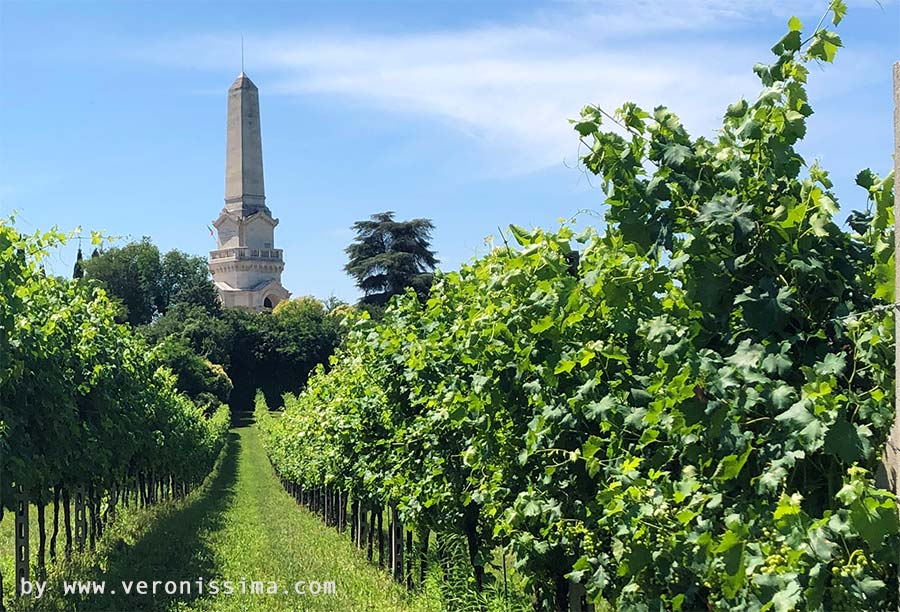
The Bianco di Custoza is a pleasant, fruity and floral white wine. It is still little known outside Italy. The production area are the morainic hills between Lake Garda and Verona. The name Custoza is famous for a battle during Risorgimento (Italian Independence Wars).
Info and Custoza cellar tours:
+39 333 2199 645 info@veronissima.com P.I. 03616420232 C.F. CPPMHL74L13L781C
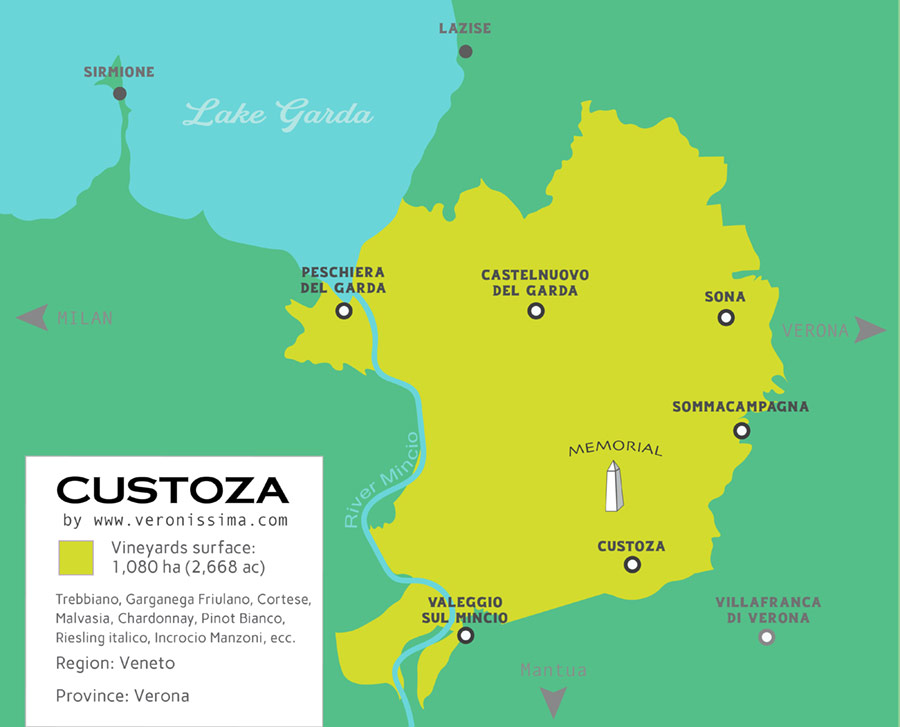
The name of this white wine comes from a small village between
Verona and Valeggio sul Mincio, in the south-eastern hills of Lake Garda.
The landscape is marked by a series of elongated hills, interspersed with
narrow hollows and wide plains. The difference in height is between 50 and
100 m above sea level. These reliefs formed over millions of years due to
the accumulation of debris produced by the sliding of the glacier
that occupied the valley where today there is Lake Garda.
The soil is varied and reflects the complex geological history of
the place. The morainic hills are made up of predominantly calcareous
gravelly-sandy deposits of glacial origin. In the flat valleys
between the hills there is a greater
abundance of silty deposits. The eastern and western
borders are marked by the Mincio and Adige valleys. Here the two rivers
deposited pebbles, fine gravel and sand. Over time erosion
and the vegetation added clayey and organic components.
Grape Varietals
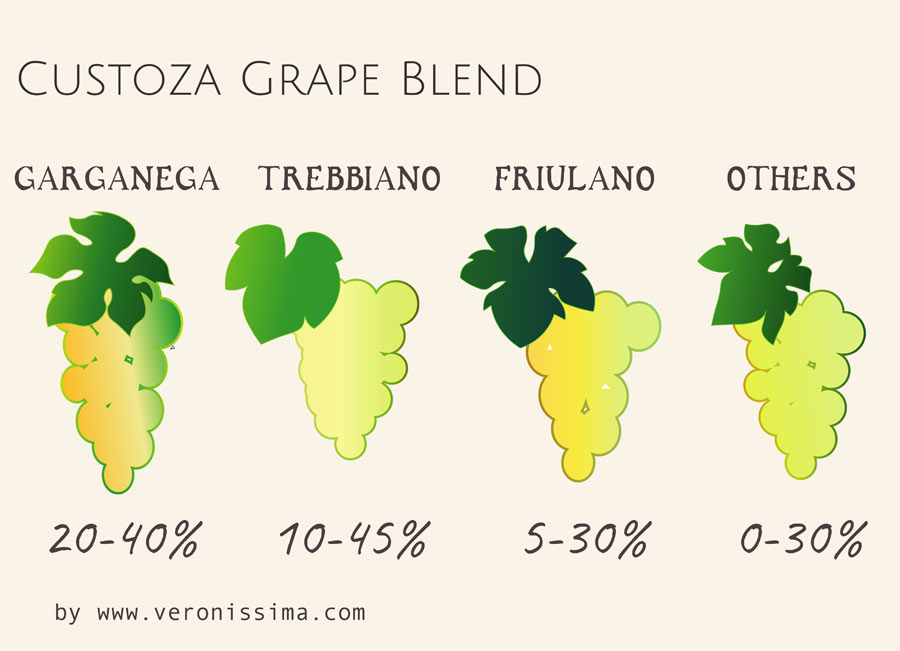
The productiong regulations for Bianco di Custoza allow the cultivation of some of the most typical white grape varieties of the Veronese, Italian and international tradition:
- Garganega (20-40%)
- Trebbiano (10-45%)
- Trebbianello (varietà locale di Tai/Friulano 5-30%)
- Bianca Fernanda (local clone of Cortese), Malvasia, Riesling Italico, Pinot Bianco, Chardonnay, Incrocio Manzoni (0-30%)
The variable percentages give producers flexibility. They can choose the varieties that best suit the type of soil, the exposure of their vineyards, and the aromatic profile they want for their wines.
Custoza Wine Characteristics
Bianco di Custoza is a wine with pleasant fruity and floral
notes.
On the nose the most typical scents are grapefruit
and lemon, melon, pear, pineapple, banana. The typical floral
scent is expressed by notes of acacia, orange blossom, elder flower.
On the palate it is dry, with balanced and
harmonious flavor and acidity, slightly bitterish, with a clean
aftertaste.
It is a wine you should drink young, when it expresses
all its fragrance and freshness. You can age some special
vintages for a few years in bottle. They will develop
greater complexity and structure.
It is also made in the Custoza Spumante (sparkling) and Passito
(sweet)
versions.
Bianco di Custoza Food Pairing
You can serve it very cold, both still and sparkling, as a
perfect Summer aperitif. It goes alone or with
appetizers based on cold cuts, fresh cheeses, bruschetta,
raw vegetables, pickles.
Custoza is an ideal wine for fish dishes of all kinds.
It is excellent with raw and marinated fish preparations.
Thanks to its light structure and harmonious balance it does not
cover their delicate taste.
In the Passito variety it is an excellent dessert wine,
with notes of jam and spices.
Visit Custoza Wineries
Among the most representative wineries in Custoza there are: La Cavalchina, Albino Piona, Monte del Fra, Tamburino Sardo.
The History
The first historical references to wine production in this area date back to the thirteenth century, together with the development of a village around a small fortification. However, production must have been much older. Romans settled in the entire southern coast of Lake Garda and the hills of the hinterland as early as the first century BC. And we know that where there were Romans there were also vines and wine. The DOC was established in 1971.
Le Battaglie di Custoza
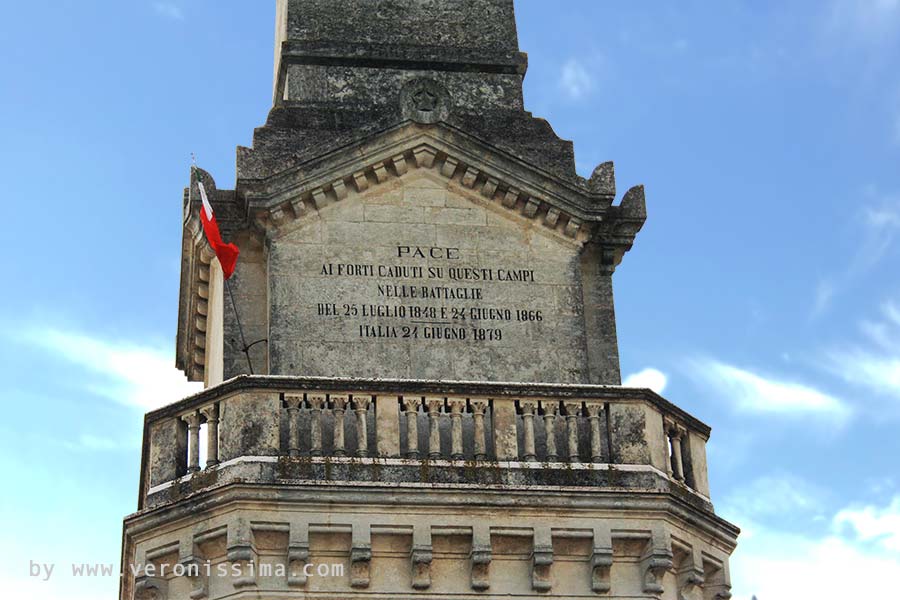
The entire DOC production area was the scene of the battles during the first (1849) and second War of Independence (1866). These were the wars that the Piedmont-Italian army fought to free the north east of Italy from the Austrians that occupied it. Looking at the map it is not difficult to understand why. The Italian army came from west. To the north they had Lake Garda. To the south is the marshes of the Mantua area. At Valeggio and Borghetto it is possible to cross the river Mincio that was on their way. Custoza is right on the straight line that connects Valeggio to Verona, which was the headquarter of the Austrians and the target of the Italians.
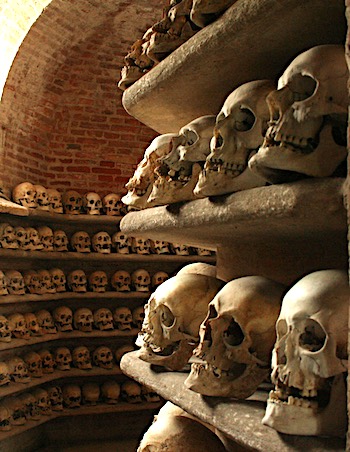
In both cases the decisive clashes
took place in Custoza, and ended with the defeat of the
Italians. Both battles were violent, and left many hundreds of
dead and wounded on the field from both sides.
On the high ground overlooking the hills around Custoza, a
large obelisk commemorates the bloody events that led to the
annexation of the Veneto to the Kingdom of Italy. In
the basement of the memorial is the charnel house where
many skulls and skeletons of the fallen are displayed. It is an
important memory of the sacrifice of young soldiers and a warning
to the horrors of war.
Guided Tours in Custoza
Today it is difficult to imagine the chaos, the blasts from muskets and cannon, the smoke of gunpowder, the screams of soldiers, in the violence of the battles that took place just over a century and a half ago. The hills of Custoza are an oasis of peace and quiet just a few minutes from Lake Garda and Verona. They are an ideal place for cycling, walking and hiking. There is also a renowned golf club. You will find many farmhouses and country restaurants where you can combine local specialties with Custoza wine in a relaxing atmosphere.
A guided tour to the cellars and vineyards of Custoza can include a stop in the charming village of Borghetto, where you can taste the famous tortellini (meat stuffed dumplings), the castle of Valeggio, built by the Scaligeri in '300, and the Memorial of the Battle of Custoza. The villages on the coast of Lake Garda are also close by. All destinations are all within a few minutes' drive.
+39 333 2199 645
info@veronissima.com

 IT
IT 日本
日本 DE
DE FR
FR 中文
中文 ES
ES